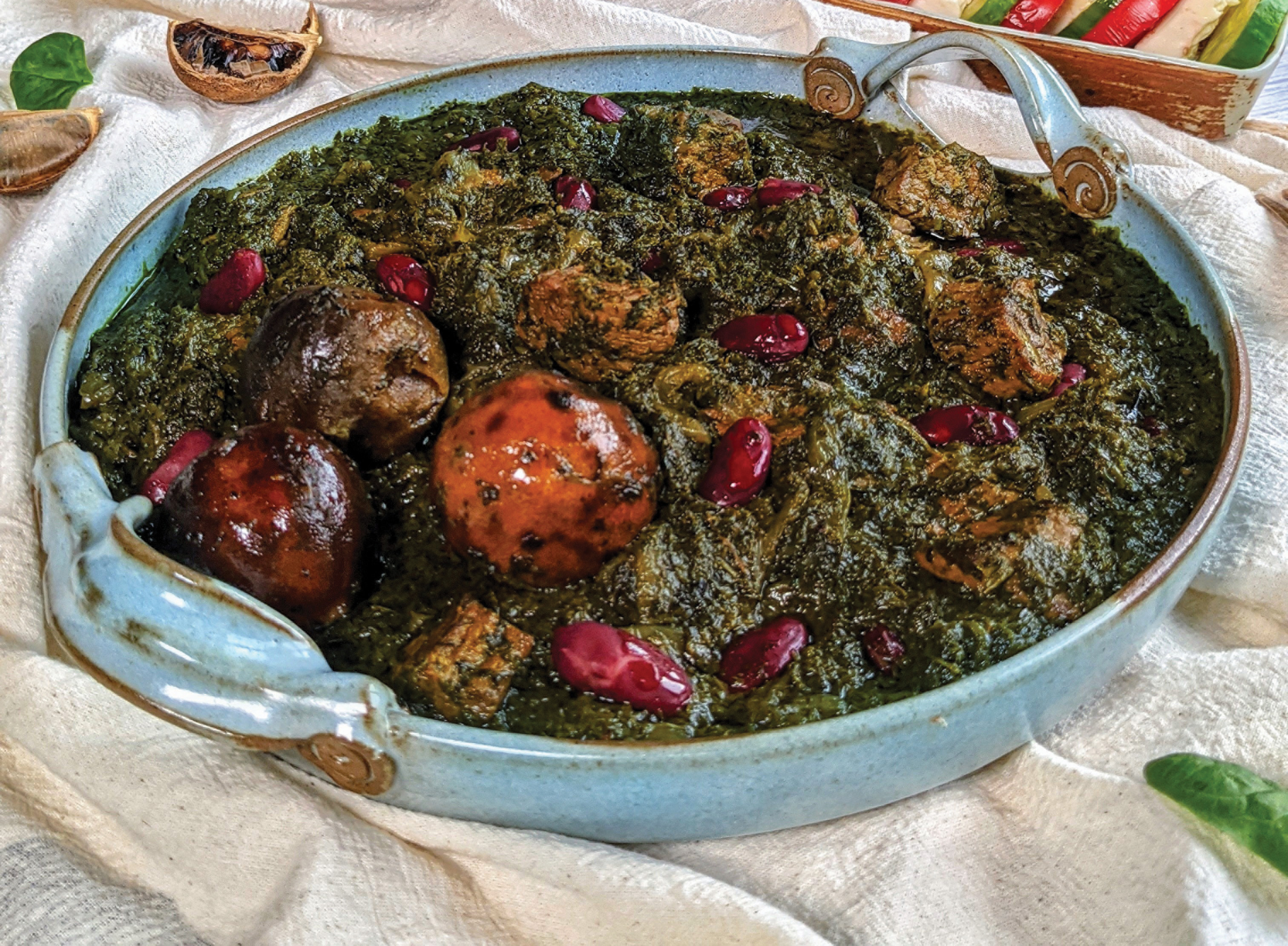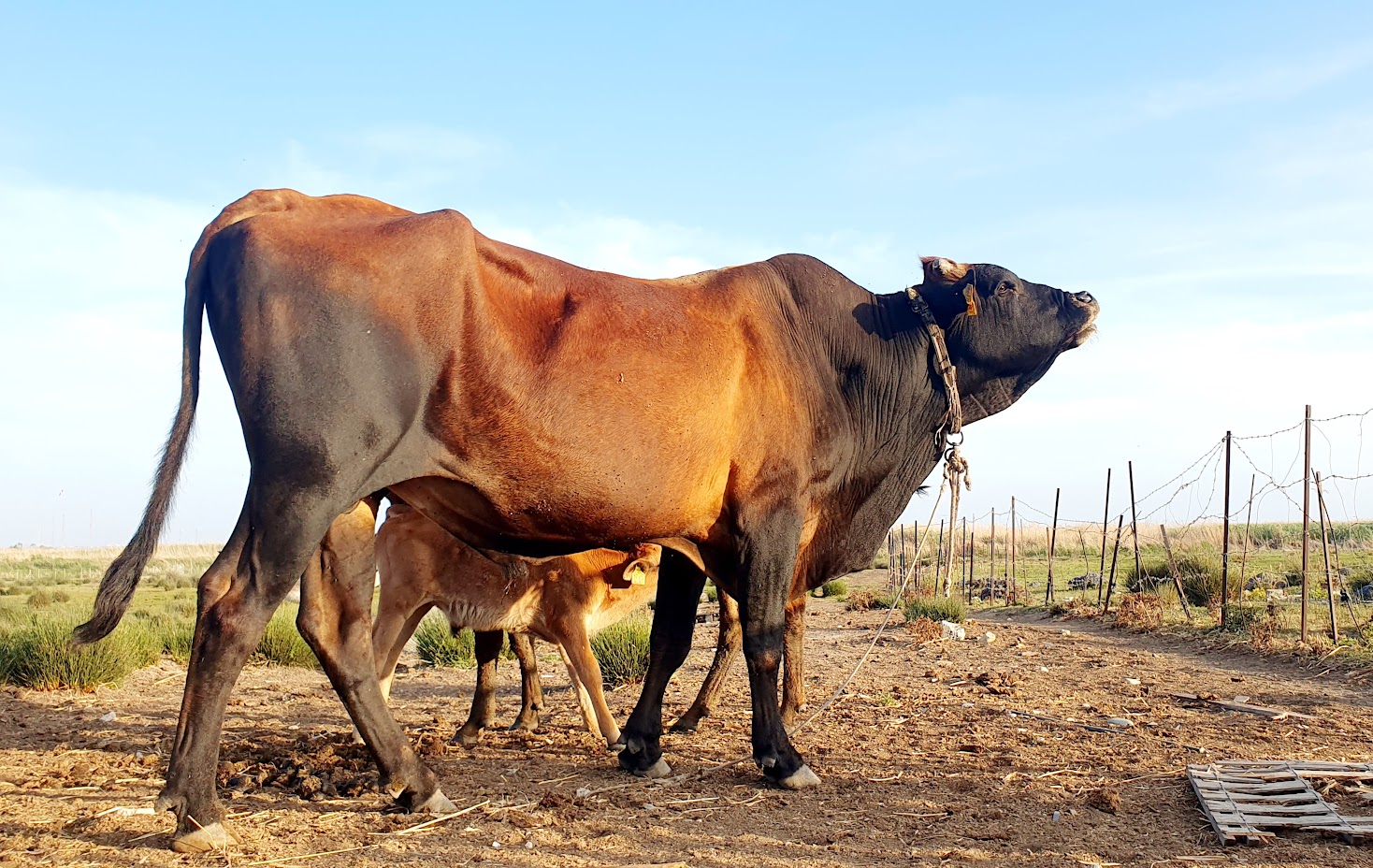Ghormeh Sabzi, often described as the heart and soul of Persian cuisine, is a story simmered over centuries. Widely regarded as the national dish of Iran, this aromatic herb stew captures the essence of Iranian hospitality and the art of slow cooking.
Its deep green hue and tangy fragrance come from a distinctive blend of sautéed herbs – chiefly parsley, coriander, fenugreek, and sometimes spinach – mixed with tender chunks of lamb or beef, kidney beans, onions and the unmistakable dried Persian limes, or limoo amani.
These limes, shrivelled and sun-dried, release a subtle sourness that transforms the stew into something altogether singular. Traditionally, Ghormeh Sabzi is served with basmati rice or tahdig – the prized, golden crust that forms at the bottom of the pot – and is often accompanied by a refreshing Shirazi salad or mast-o-khiar, a yogurt and cucumber dip.
The origins of this dish stretch back thousands of years, with some historians tracing it to between 2,000 and 5,000 years ago. The name itself tells part of the story: “Ghormeh” comes from the Turkish kavurmak, meaning “to roast” or “to braise”, while “Sabzi” is Persian for “herbs” .Together, they evoke an ancient method of preparing food through the careful braising of herbs and meat – a practice that took root during the Sassanian Empire and has endured through countless generations.
Over time, the dish became a unifying feature of Iranian life, served at family gatherings, national celebrations, and even royal courts. Its enduring appeal lies not only in its taste but also in its symbolism: a culinary embodiment of patience and balance.
Though the essence of Ghormeh Sabzi remains unchanged, its preparation has evolved with the times. Once a laborious process involving the hand-chopping of herbs and hours of slow simmering over charcoal, the stew now benefits from modern conveniences. Food processors have replaced knives for many cooks, and pressure cookers have reduced the long cooking hours without sacrificing tenderness or depth.
While lamb has traditionally been the meat of choice, beef is often used in contemporary kitchens, and vegetarian versions featuring mushrooms or plant-based proteins are becoming increasingly common. Some cooks enhance the broth with stock instead of water, creating a richer base – a nod to global culinary exchanges that have subtly influenced the dish.
Despite these adaptations, Ghormeh Sabzi remains deeply anchored in its origins. It has even transcended earthly boundaries: Iranian-American astronaut Jasmin Moghbeli famously brought a version of it into space, marking the first time an Iranian dish was enjoyed in orbit.
Such moments reflect the dish’s transformation from a family recipe into an ambassador of culture. In 2022, the food guide TasteAtlas ranked Ghormeh Sabzi among the world’s top ten dishes, placing it alongside global icons like Peruvian ceviche and Turkish cağ kebabı.
Today, travellers to Iran seek it out as a culinary rite of passage, while Iranians abroad continue to prepare it as a fragrant reminder of home. Through centuries of adaptation and across continents, Ghormeh Sabzi has held fast to its spirit.







Click here to change your cookie preferences